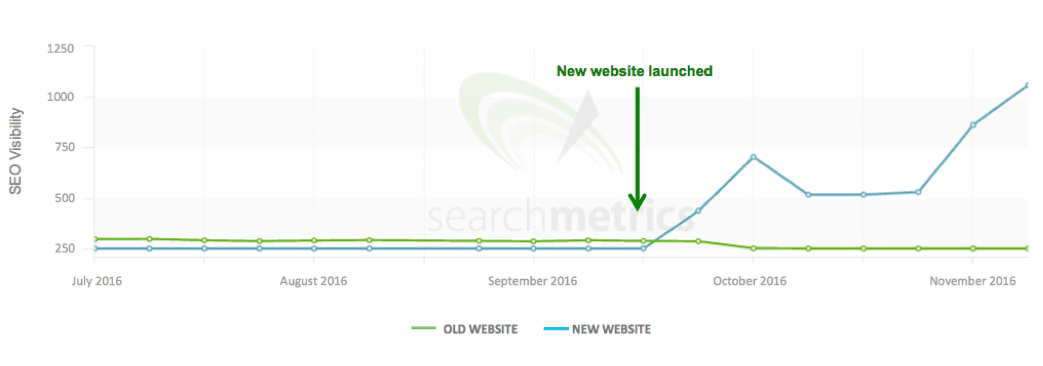SEO needs to be considered as an integral part of a web design project, not as an afterthought
SEO can play a crucial part in achieving the perfect digital marketing mix for your business and any brand that takes its digital strategy seriously will no doubt already have a robust plan in place to maximise online performance. But, organic search can be fragile, even fickle, and the smallest misjudgements can leave you exposed. Timing is of the essence, with SEO, and can often be a major contributor in getting the best, most cost-effective results in the long run.
In an ideal world, brands should begin focussing their attention on their organic search strategy as early as when they are planning the design and development of their website. However, all too often, they fail to do so and leave SEO as an afterthought or retrospective consideration, unknowingly jeopardising future success.
Website design and build briefing template
Write a detailed briefing for your next web design project and have everyone working towards one unified vision with our easy-to-use template.
Access the Website design and build briefing template
Many brands approach the development of a new website purely from a creative and functional standpoint. How will their new site look? Will it provide a good user experience? While both of these questions are essential, so too is the consideration of search. Marketing teams should also be asking themselves, from an early stage, what they can do to better equip themselves to drive quality traffic to their site.
How can we accelerate growth? What can be done to ensure healthy keyword visibility? How can we own more of our brand results in the SERPs and defend against reputational threats? Integrating your SEO strategy with your web design and development project can help tackle all of these performance objectives and save a lot of time and expense further down the line.
So, what are the top five SEO considerations that your digital marketing teams should be making, when building a new website, to ensure the best chance of hitting your business objectives?
1. Understand where your traffic will come from
It takes a lot to drive valuable traffic to your website – it doesn’t ‘just happen’ on its own. Having a solid understanding of the keyword and thematic demand surrounding your products/services and knowing which search terms are most popular is crucial. Keyword research allows you to understand where your website traffic is likely to come from and empowers you to build a clear, all-encompassing strategy for success.
2. Use your research to map out your site’s content
Any keyword and thematic trends that have been highlighted in the research phase should be used to inform the information architecture of your site and guide the selection of pages that will be featured on the domain.
The navigation, page hierarchy, accessibility and folder structure of your site can be honed to become far more successful at sending positive ranking signals to search engines. Taking these steps during your web build will be far more effective and efficient than attempting to retrospectively ‘fix’ areas of opportunity.
Furthermore, UX teams can use search insights to influence how they construct intuitive and smooth user experiences across the site; and in recent years, SEOs have seen an increasing correlation between organic visibility and healthy user experience signals.
3. Carry out pre-launch obstacle analysis
Throughout the development of your new website, iterative SEO technical analysis is certainly worth considering.
Search engine indexation depends on your web code and scripts being obstacle free. While sometimes websites can be crystal clear from a human perspective, depending on how they are coded, search engines may find them difficult to crawl, leading to poor performance in the organic SERPs.
In executing pre-launch obstacle analysis, SEOs are able to work alongside development teams, prior to the launch of a website, to ensure that such issues are rectified in a staging environment. Not only does this mean that new sites are better equipped to perform at launch, but it also prevents often costly and intrusive repair-work at a later stage.
4. Mitigate against risks, before it’s too late!
If you’re re-launching your website, as opposed to building it from scratch, ensure the correct steps have been taken to preserve historic SEO visibility before pushing the ‘go live’ button.
Over time, search engines build up an element of trust and history with the old pages of your website. If during your new web redesign process those trusted pages change or are renamed, it will take search engines some time to understand these changes and to figure out that the new pages should be assigned the authority of their predecessors. This will often trigger a severe and long-lived decline in organic visibility and traffic, impacting the performance and, in some cases, revenue of your business.
By involving your SEO team within the redesign and build process, they will take this into consideration at an early stage and ensure that necessary steps such as 301-redirect mapping, submission of new XML sitemaps and notifications within Google Search Console are all completed to prevent such risks.
The below example highlights a poorly executed web re-launch which failed to incorporate an effective SEO plan, leading to a drastic loss in historic keyword visibility and online revenue. Only after intense corrective work was the website able to regain its organic authority and begin performing to its full ability once again.
 5. Stay on top of emerging trends
5. Stay on top of emerging trends
Getting on board with industry developments and being an early adopter of new technology and techniques is likely to give you a competitive edge within your peer group.
For example, last year’s launch of AMP HTML (Accelerated Mobile Pages) had a significant impact on the way that Google served results, allowing publisher websites that had implemented it to effectively leapfrog traditional search results and gain prominent visibility for topics, themes and search terms that they would otherwise not have been able to dominate.
Agency partners should be up to date with changes on the landscape and should be in a position to help you plan the implementation of emerging applications, leaving your competitors to play catch-up.
Our analysis demonstrates a clear uplift in the organic search performance of sites once they incorporate SEO into the early stages of the design and build process.
The following example compares the SEO visibility of a website pre and post re-launch. It is clear that, following the launch of the new SEO optimised site, organic visibility across brand and generic keyword groups increases exponentially. This resulted in higher keyword rankings, an increase in relevant search traffic and growth in primary and secondary conversions.

Websites are a brand’s shop window. They are always on, 24 hours a day, so it’s important they are working effectively. Early integration of SEO into any new design and build project will increase cost efficiencies, improve online performance and enhance user experience.

Thanks to Nick Fettiplace for writing this blog.
Nick Fettiplace is head of earned media at digital agency
Jellyfish. Jellyfish delivers full service digital strategies across the world for a host of impressive brands from its offices in the UK, US and South Africa. Jellyfish also has a dedicated training division,
Jellyfish Training.






 Thanks to Nick Fettiplace for writing this blog.
Thanks to Nick Fettiplace for writing this blog.



